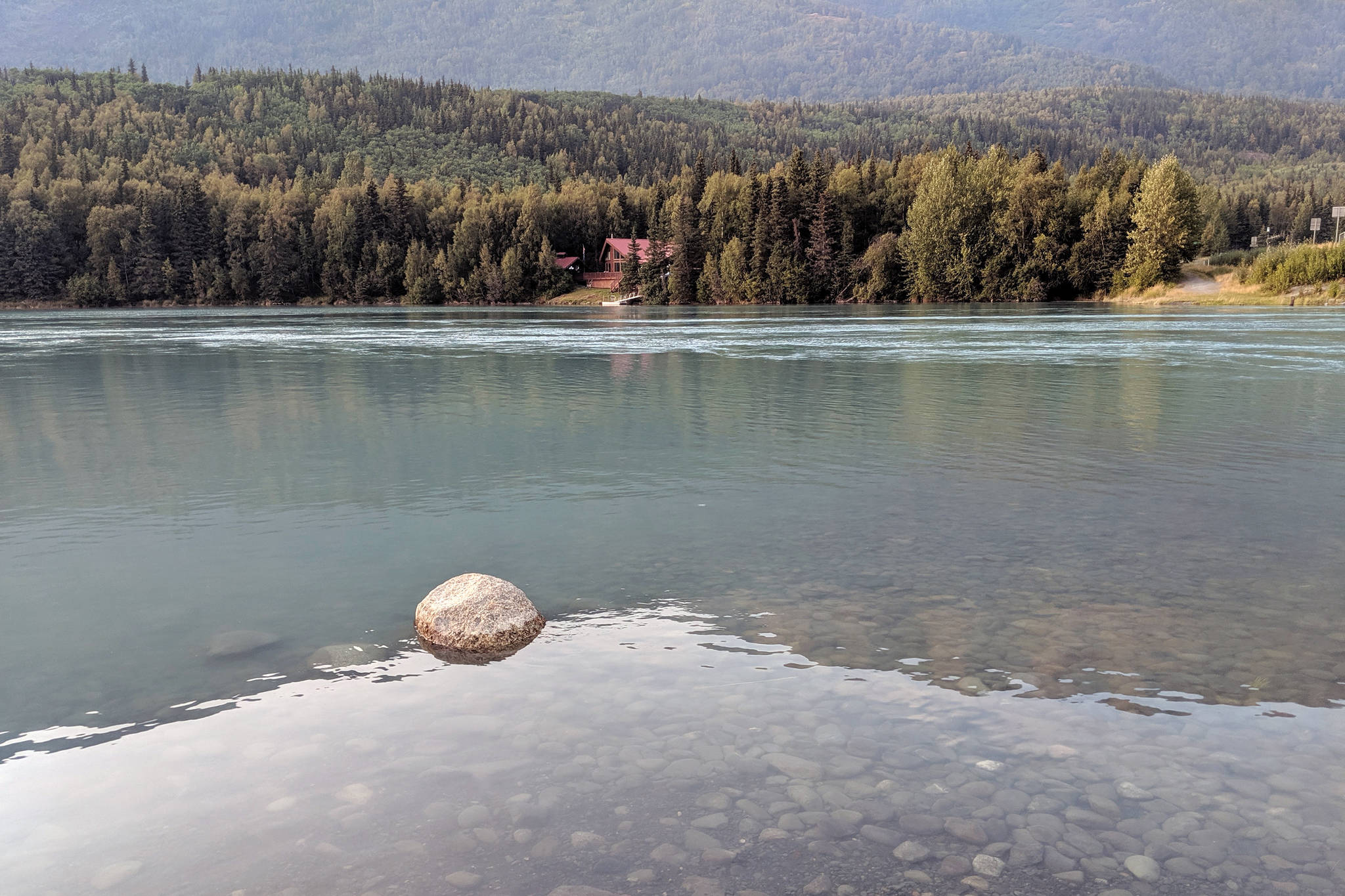A flood advisory for the Snow River looks to expire Sunday, but advisories for the Kenai River and Kenai Lake may be extended.
Jessica Cherry, senior hydrologist Alaska Pacific River Forecast Center, said the Snow River crested Saturday, and if the river drops below the action stage by noon Sunday it may expire. The Kenai River, however, is not expected to crest until later Sunday. Flood advisories for the Kenai River and Kenai Lake, which includes areas from Cooper Landing to Skilak Lake, may be extended past Sunday.
Flooding is due to the Snow Glacier dammed lake releasing, located in the headwaters of the Snow River near Moose Pass, which is an outburst event that occurs every couple of years, according to a Kenai Peninsula Borough update. The event is known as jökulhlaup, an Icelandic term describing a sudden water release from glaciers or glacier-dammed lakes.
Flooding has the potential to impact Swan Lake Fire firefighting efforts, but not yet affected operations. Sarah Gracey, public information officer for the Great Basin Incident Management Team, said on Saturday that fire crews have been relying on local boat operators with knowledge of the area to transport them across the river, but that they have not been impacted by the flooding on the Kenai River. On Friday, crews were able to make it about 1 mile into the Surprise Creek trail to begin establishing control lines.
Snow River flooding has also affected Alaska Railroad operations on the peninsula. The railroad stopped running trains between Moose Pass and Seward last week and will likely not restart service until early next week.
Stephanie Wheeler, regional communications officer, said the railroad would have to wait until water recedes before they can assess what repairs would need to be made.
The Snow River flows from an 8-mile-long glacier in the Kenai mountains. The glacier dams a side valley that fills with rainwater and snowmelt that forms a lake half a mile long and up to 450 feet deep, according to information provided by the Chugach National Forest. When the lake fills up, water will flow through a main drainage under the glacier. The lake flow takes a week or two to drain, before the empty channel is crushed by the weight of the glacier and the dammed lake begins to fill again.
Snow River jökulhlaups have been recorded since 1949, and releases its water every two to four years. Jökulhlaups on the Snow River are of special concern because the flood waters may impact residential and commercial developments on Kenai Lake and the Upper Kenai River.
“Records show that jökulhlaups have produced floods on Snow River twice the size of the biggest rainfall floors and four times the size of the largest snowmelt floods,” according to the Chugach National Forest information guide on jökulhlaups.
The lake typically releases in the fall, and last released in September 2017. The 2019 impacts are expected to match the levels of the 2017 event.
Updates can be found at the Alaska-Pacific River Forecast Center, weather.gov/aprfc.

